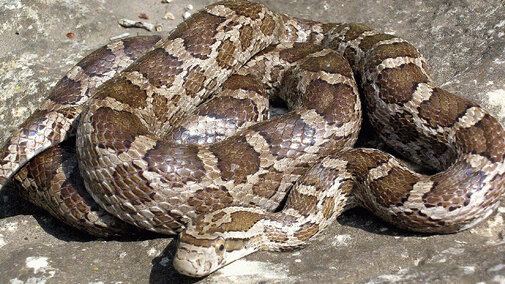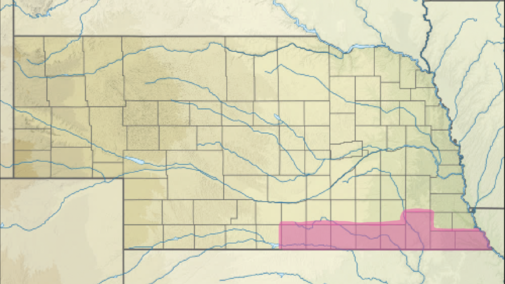Other Names: Prairie Cornsnake
Scientific Name: Pantherophis emoryi
(Formerly: Elaphe guttata)
Family: Colubridae
Description & Size
- Legless
- No eyelids
- Lacks external ears
- Scales on the back have low ridge in the middle (weakly keeled)
- Divided anal scale
- Has a “V” pattern on the head where the point faces the nose
- Head is slightly wider than the neck
- Total length: 46.0-183.0 cm (18.1-72.0 in)
- Back color: gray to light brown
- Belly color: white with dark checkerboard pattern
- May or may not have blotches down the back of the snake that are darker in color
Life History
- Diurnal and Nocturnal
- Active season: Early April – late October
- Breeding season: Late April – early May
- Lays eggs
- 3-37 eggs per female

Habitat
- Limestone outcrops next to grasslands
- Rocky hillsides
- Sometimes caves
Diet
- Small mammals
- Birds
- Bird eggs
- Reptiles
Range Map

Most common range within the last 50 years and does not include outliers. For more info email dferraro1@unl.edu